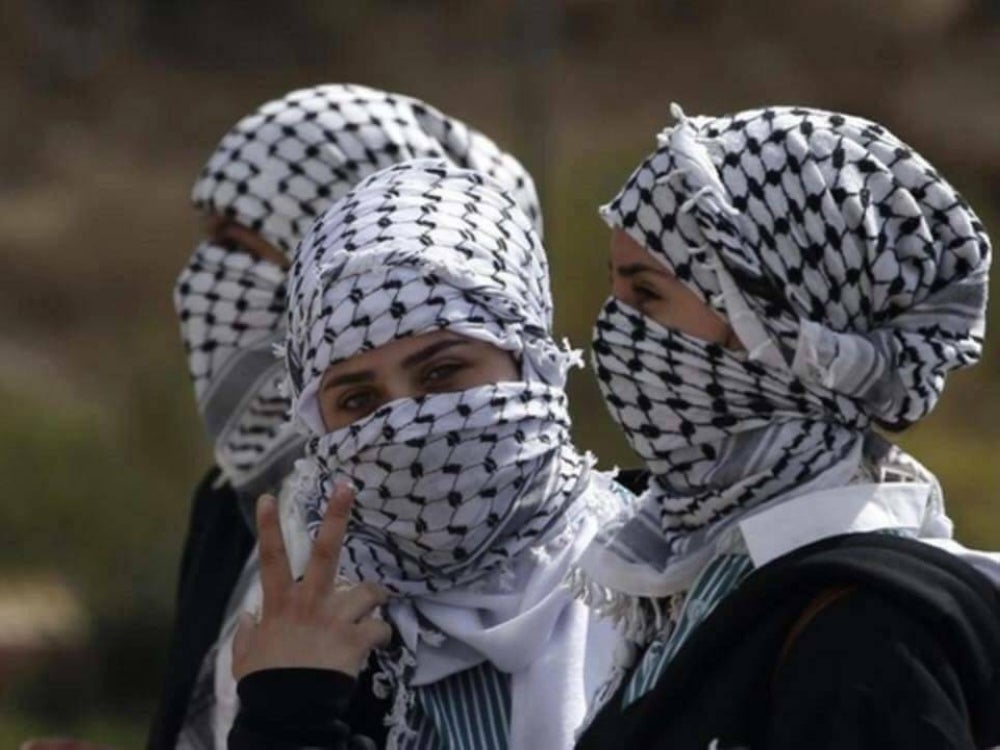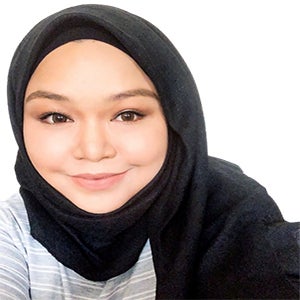The meaning and history behind the Palestinian 'Keffiyeh' scarf you've been wearing at rallies

You may have noticed an increase in the number of people wearing the 'Keffiyeh' scarf in protests in support of the Palestinian cause recently.
Wearing the black and white scarf is used as a marker of identity and a token of solidarity with the cause.
On the surface, it is an accessory that is loved by millions, but the connotations behind it are a lot deeper than what initially meets the eye.
The Palestinian keffiyeh, also known as the hatta, is a traditional headscarf worn by Palestinian men and women.
It has become a symbol of Palestinian identity and resistance, and its distinctive black and white pattern has been seen on the heads of freedom fighters, activists, and even celebrities.
The Keffiyeh brings with it the presence of resistance - but it’s also a reminder that the Palestinian campaign for freedom is alive and here to stay.
It was originally worn by farmers, but political connotations of the keffiyeh began during the 1936–1939 Arab revolt in Palestine when resistance fighters wore it over their faces to protect their identity from British soldiers.
Subsequently, the scarf became a symbol for “trouble makers” for the British, who would arrest Palestinians wearing them under suspicion.
This solidified the keffiyeh as a symbol of Palestinian resistance and was even banned by Israel between the years of 1967 and 1993, along with Palestine’s flag.
In addition to the iconic black and white checkered pattern, the Palestinian keffiyeh also features other patterns that hold significant cultural and historical meanings.
One of these patterns is the fishnet pattern, which represents the fishing traditions of the Palestinian coastal communities and their deep connection to the sea.
It also represents Palestine’s famous fishing industry which is still a lifeline for the besieged Gaza Strip’s economy but is also a metaphor for the sea being an escape from Israeli occupation.
Another pattern is the trade route pattern, which features a series of interlocking bold squares. A symbol of the historic trade routes that connected Palestine to other parts of the Middle East, North Africa, and Europe.
The pattern represents the rich cultural exchange that took place along these routes, as well as the importance of trade to the Palestinian economy.
The olive tree pattern is also commonly found on the keffiyeh. The olive tree holds great significance in Palestinian culture and history, representing resilience, strength, and the enduring connection to the land.
The olive tree pattern on the keffiyeh is a testament to the importance of agriculture to the Palestinian way of life and the deep roots that Palestinians have in their land.
Each of these patterns on the keffiyeh represents an important aspect of Palestinian culture and history. They serve as a reminder of the rich heritage of the Palestinian people.
For decades, Palestinians and Arabs have used the Palestinian keffiyeh as a marker of solidarity with the cause.
People wore it around their heads and necks in various styles. How a person wore it never really mattered, as long as they were wearing it and representing Palestine with pride. It was and is still used by Palestinians to protect themselves from Israeli teargas, especially in the occupied West Bank where they are subjected to such attacks the most.
The late Yasser Arafat, then-leader of the Palestine Liberation Organisation (PLO), famously lifted his keffiyeh off the top of his head to represent Al-Aqsa Mosque’s golden Dome of the Rock.
He often draped his keffiyeh off his right shoulder so it somewhat resembles a map of Palestine and famously addressed the United Nations General Assembly in 1974 in this fashion.
Wearing a keffiyeh with pride now more than ever, regardless of whether a person is Palestinian or not is a symbol of support and justice as it keeps Palestine on the radar.
It keeps what they are experiencing now at the forefront. It keeps their culture and their long struggle for their land alive.










